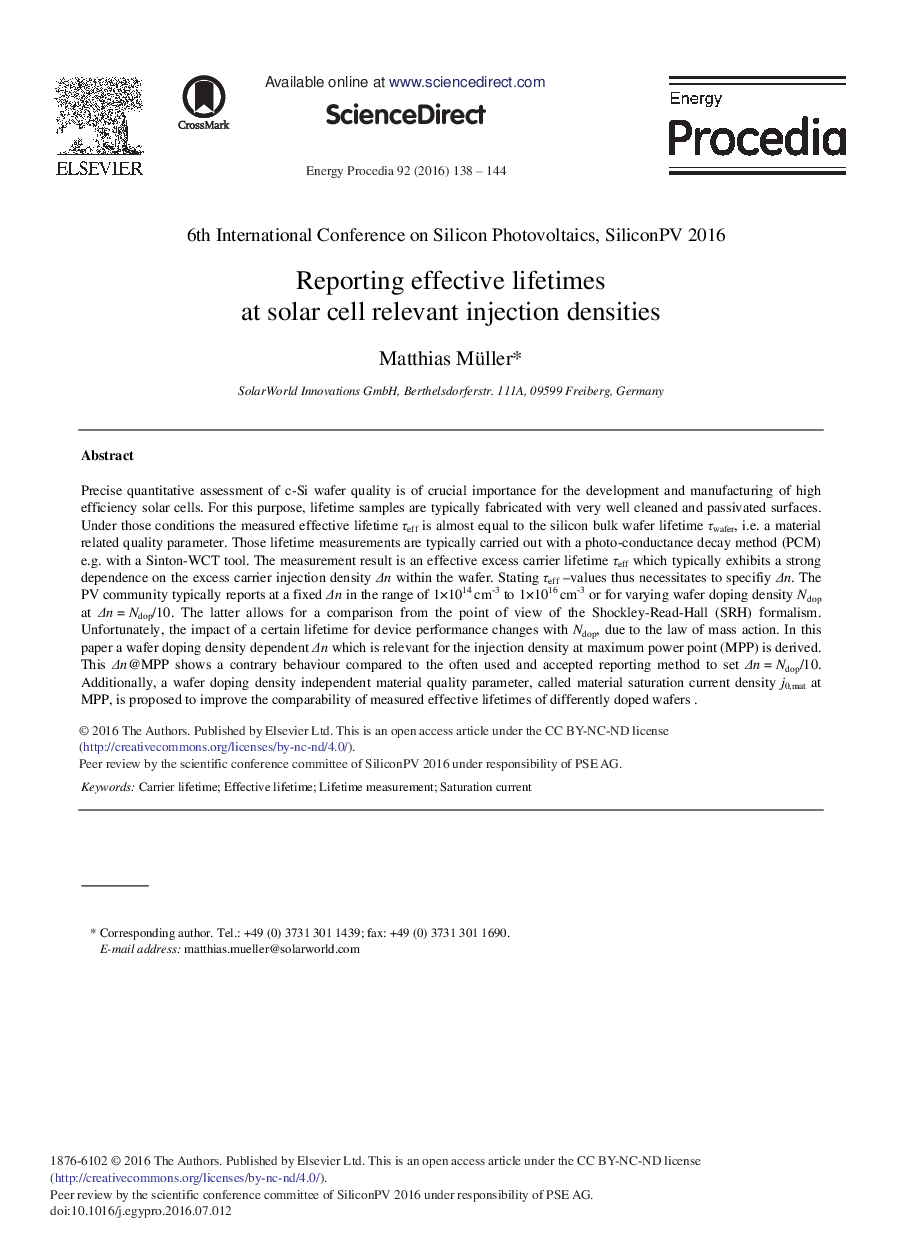| Article ID | Journal | Published Year | Pages | File Type |
|---|---|---|---|---|
| 5446570 | Energy Procedia | 2016 | 7 Pages |
Abstract
Precise quantitative assessment of c-Si wafer quality is of crucial importance for the development and manufacturing of high efficiency solar cells. For this purpose, lifetime samples are typically fabricated with very well cleaned and passivated surfaces. Under those conditions the measured effective lifetime Ïeff is almost equal to the silicon bulk wafer lifetime Ïwafer, i.e. a material related quality parameter. Those lifetime measurements are typically carried out with a photo-conductance decay method (PCM) e.g. with a Sinton-WCT tool. The measurement result is an effective excess carrier lifetime Ïeff which typically exhibits a strong dependence on the excess carrier injection density În within the wafer. Stating Ïeff -values thus necessitates to specifiy În. The PV community typically reports at a fixed În in the range of 1Ã1014 cm-3 to 1Ã1016 cm-3 or for varying wafer doping density Ndop at În = Ndop/10. The latter allows for a comparison from the point of view of the Shockley-Read-Hall (SRH) formalism. Unfortunately, the impact of a certain lifetime for device performance changes with Ndop, due to the law of mass action. In this paper a wafer doping density dependent În which is relevant for the injection density at maximum power point (MPP) is derived. This În@MPP shows a contrary behaviour compared to the often used and accepted reporting method to set În = Ndop/10. Additionally, a wafer doping density independent material quality parameter, called material saturation current density j0,mat at MPP, is proposed to improve the comparability of measured effective lifetimes of differently doped wafers.
Related Topics
Physical Sciences and Engineering
Energy
Energy (General)
Authors
Matthias Müller,
